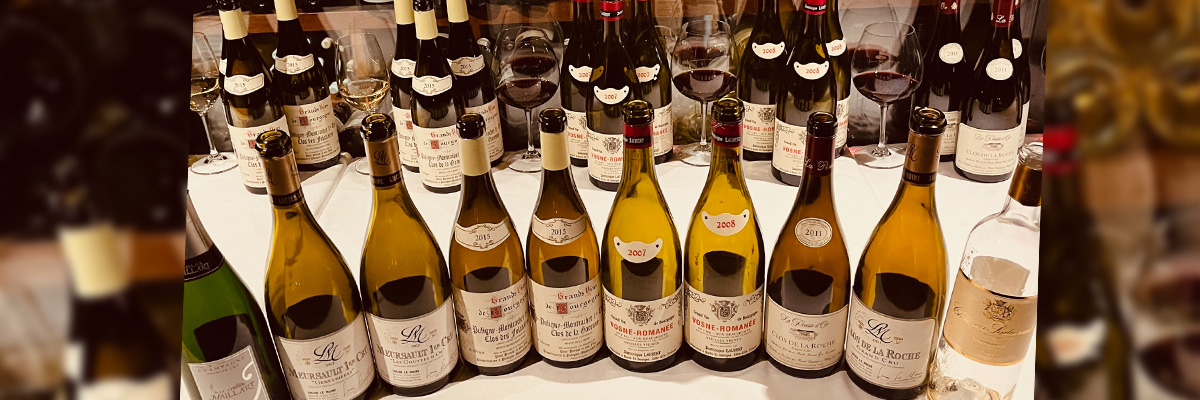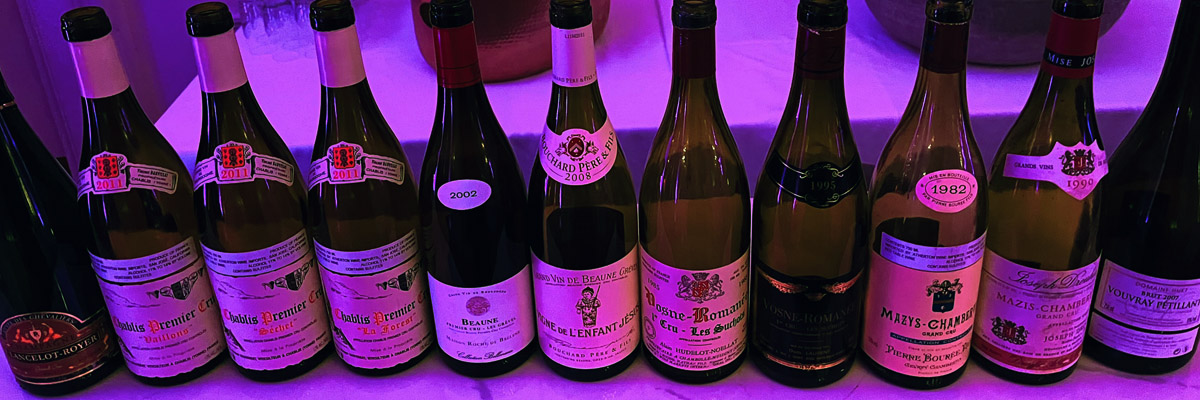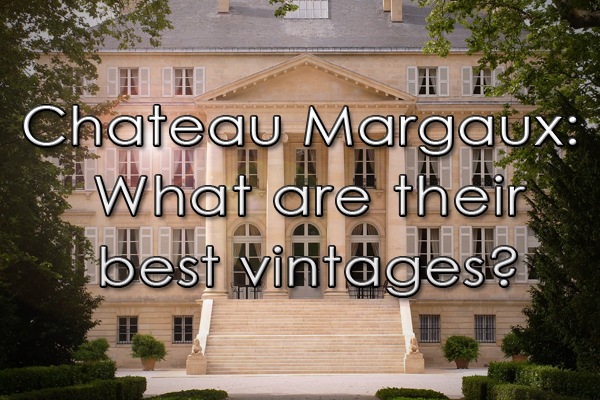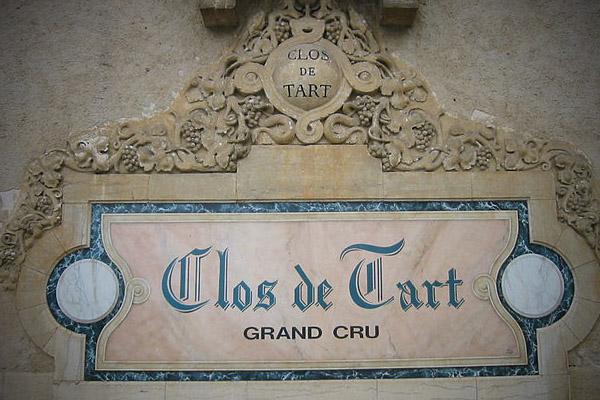
The wine choices made for dinners held by various groups are usually quite intriguing. Firstly of course you want to have some appropriate wine matchings for the food courses. Secondly there often is a theme of maybe different properties from the same vintage in a horizontal or the same property over several vintages in a vertical. When that is not the case it is prudent to organize the wines in some way that nonetheless provides interesting comparisons. This was brilliantly executed by the Confrerie des Chevaliers du Tastevin Vancouver group at Blue Water Cafe on February 18, 2025. Congrats to new Grande Senechale Dr. Christine Collison, Cellarmaster Blair Curtis and Randy Rae plus their whole team. They served eight Burgundy wines in four pairings that allowed most interesting insightful study. A few brief comments:
Started with
NV NICOLAS MAILLART PREMIER CRU PLATINE a grower Champagne since 2003 recognized by Kermit Lynch. This one uses all three grapes with a majority of Pinot Noir south of Reims mainly from Ecueil. Usually not long on the lees (2 years) and low dosage (1 gram) in a fresh lean style. However our bottles were disgorged April 2012 so they had received over 12 years of bottle age that resulted in a fuller softer more mature delight. We finished with the quite opulent
2006 CHATEAU SUDUIRAUT SAUTERNES that spent 18 months in 50% new oak 14 abv lots of honey and residual sugar.
L
UCIEN LE MOINE:
A wonderful start with two of their 2013 Meursaults Premier Cru. Mounir & Rotem Saouma don’t own Burgundy vineyards but acquire high quality fruit. Spotlighted on this Blog several times
including on January 7, 2019 here with amazing decanted and not decanted 2005 Montrachet & an outstanding 2016 Meursault-Perrieres. They are unique winemakers with no SO2, no racking, and lots of CO2 for freshness. It is an oxidative (not oxidized) style compared to the presently more popular reductive style. LLM always produces white wines with a deeper yellow look that need decanting to freshen up. Less risk of pre-mox.
2013 MEURSAULT GENEVRIERES 1ER CRU:
One of the top three vineyards with minerally Perrieres and richer Charmes but consistent with less weight and more subtle. Lighter colour and less richness than Gouttes d’Or but elegant and complex. Better citrus zest freshness with classic herbal nutty mineral notes. No rush as is still developing.
2013 MEURSAULT LES GOUTTES D’OR 1ER CRU:
Further north with an East by Northeast exposure. Means “drops of gold” with more yellow colour and rich concentration. Open mature bouquet is most attractive. Drinking forwardly now on a lovely plateau.
PAUL PERNOT:
Exciting to compare Puligny after Meursault. Puligny village wines less dependable than AC Meursault but great 1er crus showing that distinctive floral textured steely balance. Paul Pernot et des Fils are a leading light with classic winemaking showing well the natural expression of the pure fruit terroir.
2015 PULIGNY-MONTRACHET CLOS DES FOLATIERES 1ER CRU:
PP is the largest holder of 3.08 hectares of a total 17.64 in Folatieres. Vinifies all of it but sells a majority to others including Drouhin but retains some of the best for themselves. Big rich yet lifted apples and spicy pears full of complexity. Excellent smooth seductive textures with a lingering finish but a tiny bit of heat (compared to outstanding 2014). Still a real winner.
2015 PULIGNY-MONTRACHET CLOS DE LA GARENNE 1ER CRU:
Smaller old vines vineyard on thinner soils of only 1.53 hectares shared between them and Louis Jadot/Duc de Magenta.
This has perhaps a little less weight and intensity but also is truly exquisite with elegant citrus and flowers. More reductive style yet with the ripeness markings of the 2015 vintage. Better finish. Two outstanding top producer Pulignys.
DOMINIQUE LAURENT:
Former pastry chef started in 1988 gained a reputation for using a lot (200%) of new oak. He has been a conscientious buyer of old vines fruit (no racking) that he puts in his own Troncais oak barrels but with his son Jean now has Meursault Poruzots & Nuits St. Georges properties. Wines are improving. Aux Beaumonts is an excellent 1er cru of 11.39 hectares north of the D 109 road that separates it from Aux Brûlées – vertical
written up here on February 10. 2008 Aux Brûlées from Meo-Camuzet had some acidity issues but has much better fruit and way more complex delicacy.
2007 VOSNE-ROMANEE AUX BEAUMONTS VIEILLES VIGNES 1ER CRU:
Hot early on but a poor Summer resulted in variable wines. Both wines imported from Atherton with a back label stating “Sans Collage” & “Sans Filtration”. Red fruits with acidity prominent rather light and elegant for earlier drinking. Refreshing with the Rabbit Leg Confit and Morello cherries course.
2008 VOSNE-ROMANEE AUX BEAUMONTS VIEILLES VIGNES 1ER CRU:
Difficult flowering and another bad Summer but those who waited for drying winds and more ripeness in late September & early October did best. Dominque stated it was “an outstanding gardener vintage” because when vines were pruned for low yields and selected for no rot they’re successful. He declassified some of his barrels. Better earthy fruit and depth with spiced minerals but has lots of acidity too and is rather quite light bodied.
CLOS DE LA ROCHE GRAND CRU:
Largest property in Morey St. Denis with 16.9 hectares with largest holding by Ponsot of 3.31 followed by Dujac & Rousseau. Tend to be austere young with a brawny powerful tight dense structure for aging. 2011 was a fresh but variable year (better than 2004) where many picked too early. Best when the grapes had sufficient ripeness.
2011 LA POUSSE D’OR:
Hold .32 hectares with good definition. Dark young fruit displaying power with exciting intensity. Impressive but still developing. Lots of full bodied depth at 13 abv. Top producer that your scribe recommends for their recent vintages – especially this decade and 2019.
2011 LUCIEN LE MOINE:
Shows laudable pure blackberries and cherries with herbs. Structured yet juicy. Length at 13.5 abv. Needs decanting and airing – plus aging further. Enjoyable drinking now nonetheless with the Black Angus Prime Striploin perfectly cooked. Surprised by both Clos de la Roche from this unheralded 2011 vintage. An underrated appellation.
You might also like:







